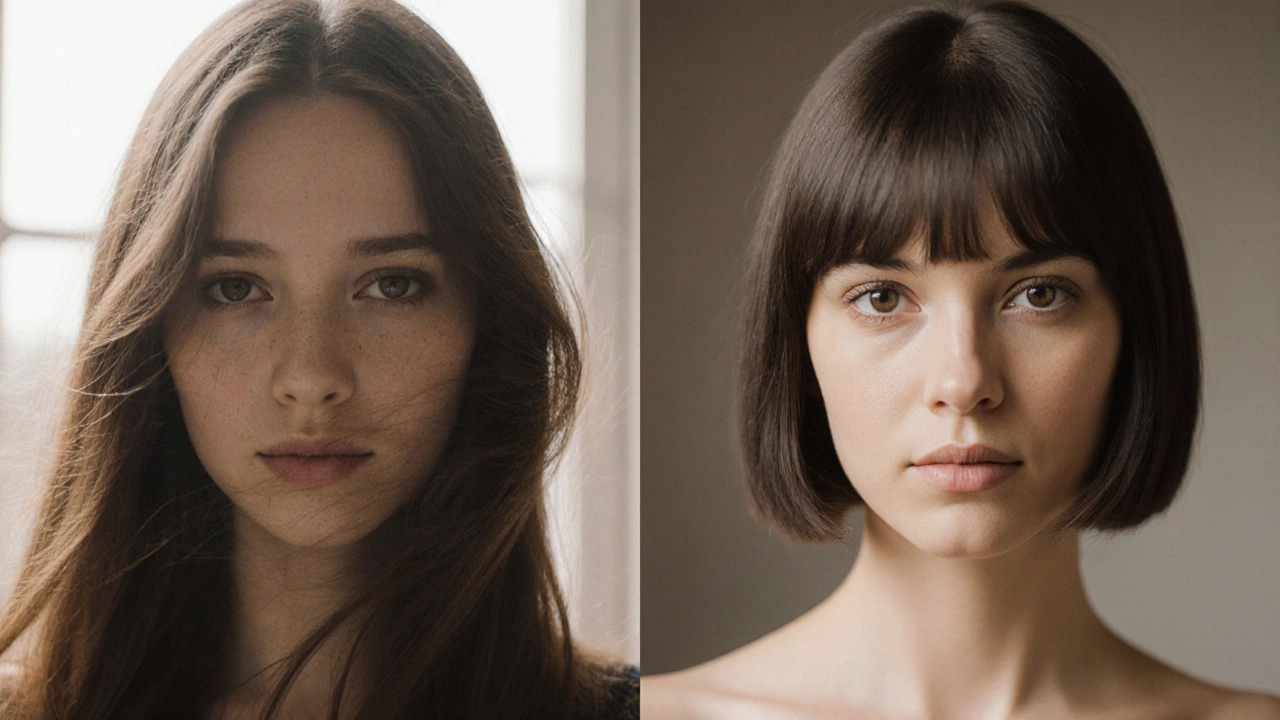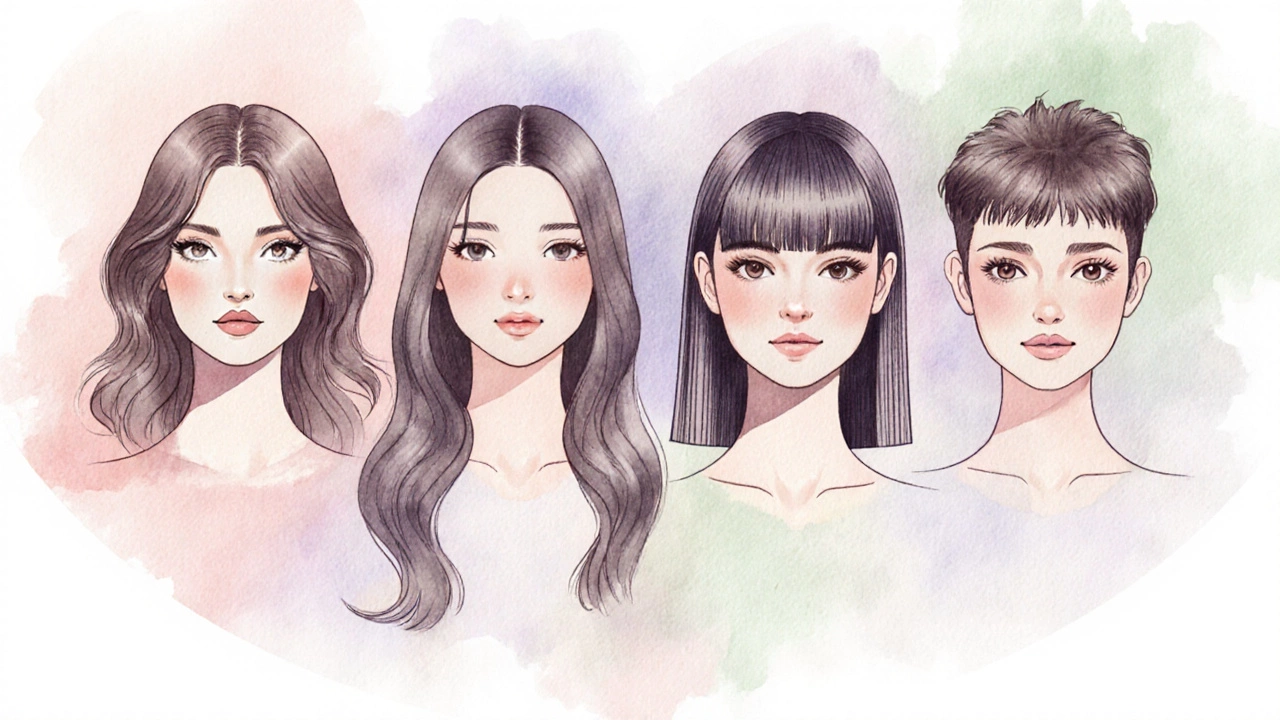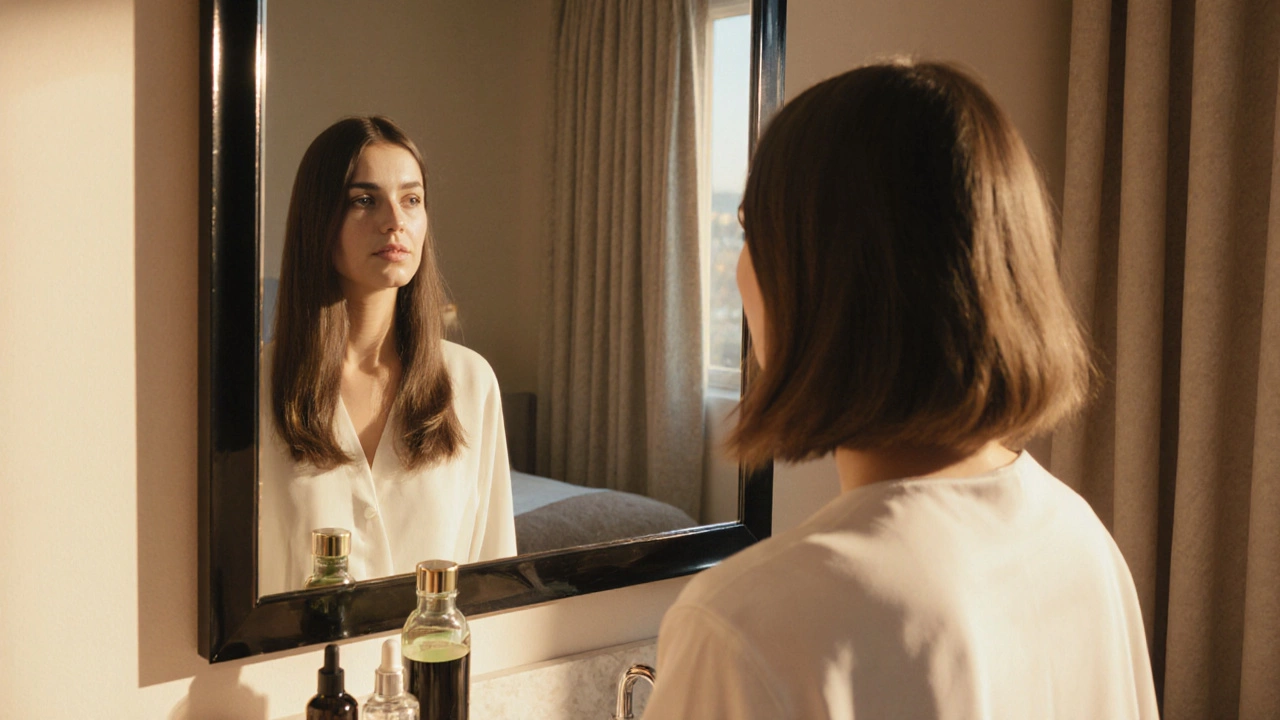
Hair Length Advisor Calculator
Which Hair Length Suits You Best?
Answer a few simple questions to get personalized recommendations based on face shape, hair texture, and lifestyle.
Ever wondered whether you should let your locks grow or keep them trimmed short? The answer isn’t a simple yes or no-attractiveness depends on a mix of biology, culture, face shape, and the products you use. In this guide we’ll break down the science behind hair attractiveness, compare the strengths of long and short styles, and give you practical tips for choosing the look that works best for you.
What Researchers Say About Hair Length and Appeal
Evolutionary psychologists have long linked hair length to fertility signals. In a 2022 study published in the Journal of Evolutionary Anthropology, researchers found that men across ten cultures rated women with longer hair as more youthful, while women associated longer hair with health and vitality. The same study noted that men in high‑status professions showed a stronger preference for longer hair, possibly because it signals the ability to invest time in personal grooming.
Contrast that with findings from a 2023 cross‑cultural survey by the International Beauty Research Center. The survey revealed that in urban settings, short hair scored higher on the “modern and confident” axis, especially among younger adults. The researchers attributed this to shifting fashion cycles that celebrate efficiency and individuality.
Long Hair: The Pros and Cons
Long hair is defined as hair that extends beyond the shoulders, often reaching the mid‑back or longer. It typically requires a higher maintenance routine, but it also offers a range of styling options.
- Versatility: You can braid, curl, pull‑back, or let it flow freely. Each style can convey a different mood, from romantic to edgy.
- Perceived health: When kept shiny and well‑conditioned, long hair signals good nutrition and low stress levels, which are attractive cues.
- Traditional appeal: Many cultures still view long hair as a symbol of femininity and marital status, which can boost perceived attractiveness in those contexts.
On the flip side, long hair can become a liability if you’re dealing with hair damage from heat, chemical treatments, or environmental stress. Split ends, breakage, and weight‑induced scalp tension are common issues that can detract from the overall look.
Short Hair: The Pros and Cons
Short hair refers to any style that ends at or above the chin. It tends to be easier to maintain and can highlight facial features.
- Low maintenance: Short cuts require less washing, conditioning, and drying time, which many busy professionals appreciate.
- Face‑framing: A well‑chosen short style can accentuate cheekbones, jawlines, and eyes, making the face appear more defined.
- Modern vibe: In many fashion-forward cities, short hair is linked to confidence, independence, and a willingness to break norms.
Potential downsides include fewer styling options for formal events and a higher visibility of scalp health. If you have a dry scalp or thinning hair, a short cut can sometimes make these issues more apparent.
How Face Shape Influences the Right Length
One of the biggest practical factors is how your hair length interacts with your face shape. Below is a quick cheat‑sheet:
- Oval: Both long and short work. Choose based on personal style.
- Round: Long, layered cuts create vertical lines that lengthen the face. Short, angled bobs can also add definition.
- Square: Soft, long waves soften a strong jaw. Short, asymmetrical cuts balance angular features.
- Heart: Long, side‑swept bangs hide a wider forehead. Short, pixie cuts with volume at the crown balance proportions.

Texture Matters: Fine vs Thick Hair
If your hair is fine, long styles can appear limp unless you add volume‑boosting products like lightweight mousses or root‑lifting sprays. Thick hair, on the other hand, can become unruly at length, so regular trims and smoothing serums become essential.
Here’s a quick rule of thumb: fine hair + short cut = instant lift; thick hair + long cut = need for tension‑relieving conditioning treatments.
Hair Care Products That Enhance Attractiveness
Regardless of length, the right products can turn an ordinary mane into a head‑turner. Below are four categories you should consider:
- Shampoo & Conditioner: Look for formulas with biotin, argan oil, or keratin. These ingredients improve shine and reduce breakage.
- Leave‑in Treatments: For long hair, a lightweight silicone‑free serum protects against split ends. For short hair, a curl‑defining cream can add texture without weighing the strands down.
- Heat Protectants: If you style with straighteners or curling wands, a spray with dimethicone and glycerin shields the cuticle.
- Scalp Boosters: Products containing tea tree oil or salicylic acid keep the scalp healthy, which is especially visible with short cuts.
Pro tip: Rotate your shampoo every 6‑8 weeks to prevent product buildup, which can dull the natural luster that most people find attractive.
Comparison Table: Long vs Short Hair
| Attribute | Long Hair | Short Hair |
|---|---|---|
| Versatility | High - braids, up‑dos, waves, curls | Medium - pixie, bob, slick‑back, textured crop |
| Maintenance Time | 30‑45 min daily (wash, detangle, style) | 10‑20 min daily |
| Perceived Youthfulness | Usually higher | Depends on cut sharpness |
| Best for Face Shapes | Oval, round, heart (layered) | Square, oval, round (angular) |
| Product Focus | Leave‑in serums, deep conditioners | Scalp treatments, lightweight styling creams |
| Seasonal Comfort | Can feel heavy in hot climates | Cooler in summer, may need extra moisture in winter |

Real‑World Examples: Who Rocks Which Length?
Consider Australian actress Margot Robbie. Early in her career she sported long, flowing waves that highlighted her youthful features, aligning with the traditional attractiveness signal. Later, for the “Suicide Squad” promotion, she opted for a sleek bob that accentuated her jawline and gave her a bold, modern edge.
On the other side, singer Billie Eilish chose a short, neon‑green bob that became her signature look. The stark contrast between her short hair and vibrant wardrobe reinforced her image as a boundary‑pushing artist, resonating with fans who value non‑conformity.
What these examples show is that attractiveness isn’t static-it shifts with context, personal brand, and how well the hair style matches the individual’s features.
How to Decide What’s Right for You
- Identify your face shape. Use the cheat‑sheet above to see which length flatters your proportions.
- Assess your hair texture. Fine hair may benefit from a short cut for instant volume; thick hair may need length to distribute weight evenly.
- Consider lifestyle. If you’re pressed for time, short hair saves minutes each morning.
- Test with a virtual makeover. Many apps let you upload a selfie and swap lengths before you commit.
- Choose products that support your decision. Follow the product guide above to keep your hair healthy, whichever length you pick.
Remember, confidence is the final ingredient that makes any style attractive. If you feel good, people will notice.
Frequently Asked Questions
Does long hair actually make a person look younger?
Studies show a correlation between longer hair and perceived youth, especially when the hair appears healthy and well‑maintained. The key is shine and lack of breakage; damaged long hair can have the opposite effect.
Can I switch from long to short without losing hair health?
Yes. A professional trim that removes split ends actually improves overall health. Follow up with a strengthening conditioner and a scalp serum to keep the newly exposed strands strong.
Which hair length suits a round face best?
Long, layered cuts create vertical lines that elongate the face. A short, angled bob with volume at the crown also works well by adding definition.
Do short hairstyles highlight scalp issues?
Because the scalp is more exposed, any dryness, dandruff, or thinning becomes noticeable. Using a tea‑tree scalp treatment or a gentle exfoliating shampoo can keep the scalp looking clean.
What product should I use to keep long hair from becoming heavy?
A lightweight leave‑in serum with silicone‑free ingredients adds shine without weight. Look for terms like "weightless" or "air‑kissed" on the label.
Whatever you decide, keep an eye on how your hair feels and looks. The most attractive style is the one that makes you feel confident and comfortable.
 Hair Care
Hair Care